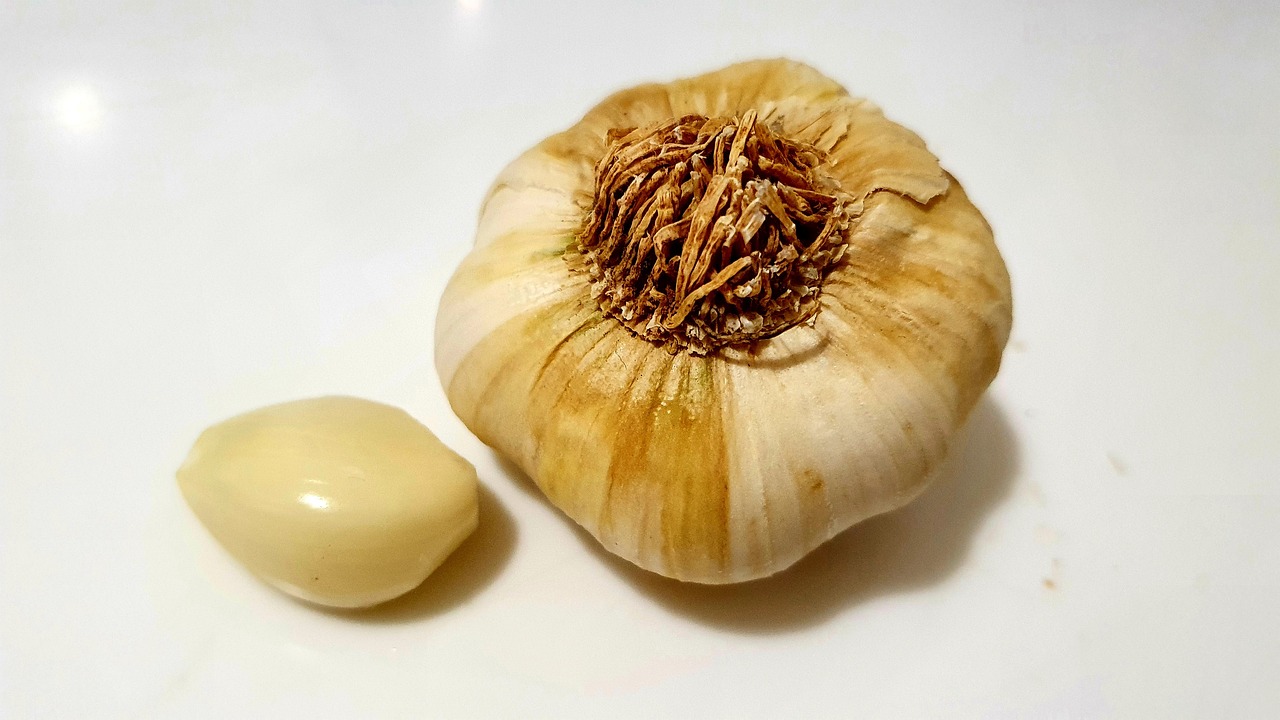How to Make Your Own Natural Sunscreen
Creating your own natural sunscreen at home can be a fun and rewarding experience. Not only do you have full control over the ingredients you use, but you also get to tailor the sunscreen to your skin's specific needs. By using natural ingredients, you can protect your skin from the sun's harmful UV rays without exposing it to the chemicals often found in commercial sunscreens. It's like crafting a personalized shield for your skin against the sun's powerful rays.

Benefits of Natural Sunscreen
Natural sunscreen offers a plethora of benefits that go beyond just protecting your skin from the sun's harmful rays. One of the most significant advantages is the avoidance of harsh chemicals commonly found in commercial sunscreens. By opting for natural ingredients, you can reduce the risk of skin irritation and allergic reactions, making it suitable for sensitive skin types. Additionally, natural sunscreen is gentle on the environment, as it does not contain chemicals that can harm marine life when washed off in the water.

Essential Ingredients for DIY Sunscreen
When it comes to creating your own natural sunscreen, selecting the right ingredients is crucial for both effectiveness and safety. One of the essential components for DIY sunscreen is zinc oxide, a mineral that provides broad-spectrum protection against UVA and UVB rays. It acts as a physical barrier on the skin, reflecting and scattering the harmful rays.
Coconut oil is another key ingredient known for its moisturizing properties. It helps keep the skin hydrated while offering a natural SPF of around 4-6. Combined with other ingredients, coconut oil can enhance the texture and spreadability of your homemade sunscreen.
Shea butter is a popular choice for DIY sunscreen due to its nourishing and soothing effects on the skin. It is rich in vitamins and fatty acids, making it an excellent emollient that helps protect the skin from environmental damage.
In addition to the base ingredients, incorporating essential oils can provide added benefits such as fragrance, antioxidant properties, and even extra sun protection. Essential oils like lavender, rosemary, or carrot seed oil can complement the sunscreen formula while offering aromatherapy benefits.

SPF and Sun Protection
When it comes to protecting your skin from the sun's harmful rays, understanding SPF and sun protection is crucial. SPF, or Sun Protection Factor, measures the level of protection a sunscreen offers against UVB rays, which are responsible for causing sunburn and skin cancer. The higher the SPF number, the greater the protection. However, it's important to note that SPF only indicates protection against UVB rays, not UVA rays, which can also damage the skin and contribute to premature aging.
For adequate sun protection, it's recommended to use a broad-spectrum sunscreen that protects against both UVA and UVB rays. When making your own natural sunscreen, you can customize the SPF by adjusting the amount of zinc oxide, a key ingredient that provides physical sun protection. Zinc oxide is a mineral that sits on top of the skin and reflects UV rays, offering a natural barrier against the sun.
It's essential to apply sunscreen generously and reapply every two hours, especially after swimming or sweating. Remember that no sunscreen provides 100% protection, so it's advisable to seek shade during peak sun hours and wear protective clothing, such as hats and sunglasses, for added sun protection. By combining these measures with homemade natural sunscreen, you can enjoy the sun safely while nourishing your skin with beneficial ingredients.

Recipes for Homemade Sunscreen
Creating your own natural sunscreen can be a fun and rewarding process. By using simple ingredients, you can tailor your sunscreen to suit your skin type and preferences. One popular recipe involves combining zinc oxide, a natural mineral that provides sun protection, with coconut oil and shea butter for moisturizing benefits. Adding a few drops of essential oils not only enhances the scent but also offers additional skin benefits.
If you prefer a lighter sunscreen, you can opt for a spray formula. Mixing aloe vera gel with vitamin E oil and a carrier oil like jojoba oil can create a refreshing and nourishing sunscreen spray. This recipe is perfect for those who enjoy a non-greasy feel on their skin while still getting adequate sun protection.
For those with sensitive skin, a gentle homemade sunscreen lotion might be the best choice. Combining calendula-infused oil with beeswax and lavender essential oil can create a soothing and protective lotion that is gentle on the skin. The anti-inflammatory properties of calendula make it ideal for calming irritated skin.

Storage and Shelf Life
When it comes to storing your homemade natural sunscreen, it is essential to follow certain guidelines to maintain its effectiveness and shelf life. Proper storage practices can help preserve the integrity of the ingredients and ensure that the sunscreen remains safe to use over time.
One key aspect of storing homemade sunscreen is to keep it in a cool, dark place away from direct sunlight. Exposure to light and heat can degrade the ingredients and reduce the sunscreen's efficacy. Consider storing the sunscreen in a tinted container or a dark cabinet to protect it from light exposure.
Additionally, it is important to seal the container tightly after each use to prevent air and moisture from affecting the consistency of the sunscreen. Proper sealing can also help prevent contamination and maintain the quality of the product.
Some natural ingredients used in homemade sunscreen, such as coconut oil and shea butter, are sensitive to temperature changes. To prevent the sunscreen from melting or solidifying, store it at a consistent room temperature. Avoid leaving the sunscreen in hot cars or areas with extreme temperature fluctuations.
It is recommended to label the container with the date of preparation to track the shelf life of the sunscreen. While natural sunscreen does not contain synthetic preservatives, it is still important to use it within a reasonable timeframe to ensure its effectiveness. Generally, homemade sunscreen can last for about 6 months to a year, depending on the ingredients used.
When using the sunscreen, always check for any changes in color, texture, or smell, as these could indicate that the product has expired or gone bad. If the sunscreen shows signs of spoilage, such as a rancid odor or unusual consistency, it is best to discard it and make a fresh batch.

Safety Precautions
Safety precautions are essential when it comes to making and using natural sunscreen. One crucial aspect is proper measuring of ingredients. Ensure accurate measurements to maintain the effectiveness and SPF of the sunscreen. Too much or too little of a specific ingredient can alter the protection level, compromising the sunscreen's efficacy.
Another important safety tip is testing for skin sensitivity before full application. Conduct a patch test on a small area of skin to check for any adverse reactions or allergies. This step is vital, especially if you have sensitive skin or are using essential oils in your homemade sunscreen.
Reapplication guidelines should also be followed diligently to ensure continuous sun protection. Natural sunscreen may require more frequent reapplication compared to commercial products due to the absence of chemical stabilizers. Remember to reapply sunscreen every two hours or more frequently if swimming or sweating.
When making natural sunscreen, it is crucial to maintain cleanliness and hygiene throughout the process. Use clean utensils, containers, and work surfaces to prevent contamination and ensure the safety of the final product. Properly label your homemade sunscreen with ingredients and expiration date for future reference.
Additionally, store your homemade sunscreen properly to preserve its effectiveness and prevent spoilage. Keep it in a cool, dry place away from direct sunlight. Consider using opaque or dark glass containers to protect the sunscreen from light exposure, which can degrade certain ingredients.

Environmental Impact of Natural Sunscreen
When it comes to the environmental impact of natural sunscreen, the benefits extend beyond personal health. By choosing natural sunscreen over conventional options, you are not only safeguarding your skin but also contributing to the well-being of the environment. Commercial sunscreens often contain chemicals like oxybenzone and octinoxate, which have been linked to coral bleaching and marine ecosystem damage. These chemicals can wash off into the ocean when we swim, posing a threat to marine life and coral reefs.
On the contrary, natural sunscreens typically use mineral-based ingredients like zinc oxide and titanium dioxide, which are considered reef-safe. These minerals provide effective sun protection without harming marine ecosystems. By opting for natural sunscreen, you are making a conscious choice to reduce chemical pollution in water bodies and protect delicate coral reefs, which are vital for marine biodiversity.
Furthermore, the production and disposal of conventional sunscreens can have a negative environmental impact due to the use of synthetic chemicals and non-biodegradable packaging. Natural sunscreen recipes often involve simple, biodegradable ingredients that are less harmful to the environment. By making your own natural sunscreen at home, you can minimize waste and reduce your carbon footprint compared to purchasing commercial products packaged in plastic containers.

Alternatives to Homemade Sunscreen
When it comes to sun protection, homemade sunscreen is not the only option available. There are several alternatives that can provide additional protection against harmful UV rays. One alternative is clothing with UPF (Ultraviolet Protection Factor) ratings, which are specially designed to block out the sun's rays and protect your skin. By wearing UPF clothing, you can add an extra layer of defense against sunburn and skin damage.
Seeking shade is another effective alternative to homemade sunscreen. By staying in the shade during peak sun hours, typically between 10 AM and 4 PM, you can reduce your exposure to harmful UV rays. Whether you're at the beach, park, or outdoor event, finding a shady spot can help minimize the risk of sunburn and skin aging.
Incorporating foods rich in antioxidants into your diet can also provide added sun protection from the inside out. Antioxidants, found in fruits, vegetables, and nuts, help combat free radicals in the body caused by sun exposure. By consuming a diet high in antioxidants, you can support your skin's natural defenses against UV damage and promote overall skin health.
Frequently Asked Questions
- Can natural sunscreen provide adequate protection against UV rays?
Yes, natural sunscreen can offer effective protection against both UVA and UVB rays when formulated correctly with ingredients like zinc oxide and titanium dioxide.
- Is homemade sunscreen as effective as commercial sunscreen?
Homemade sunscreen can be equally effective as commercial products if made with the right ingredients and following proper SPF guidelines. However, reapplication is crucial for maintaining protection.
- Are there any potential allergic reactions to natural sunscreen ingredients?
While natural ingredients are generally gentle, individuals with sensitive skin should perform a patch test before full application to ensure no adverse reactions occur.
- How often should homemade sunscreen be reapplied?
It is recommended to reapply homemade sunscreen every two hours, or more frequently if swimming or sweating, to maintain its effectiveness in protecting the skin.
- Can natural sunscreen harm marine life?
No, natural sunscreen is environmentally friendly and does not contain harmful chemicals that can damage marine ecosystems, making it a safer choice for both your skin and the environment.



















